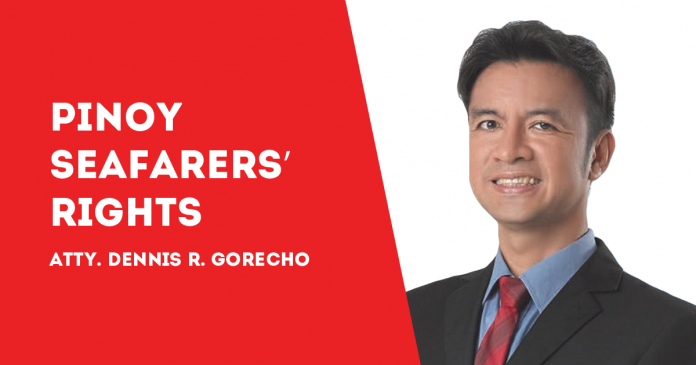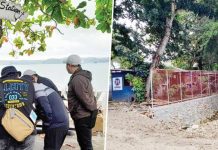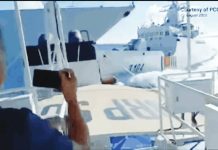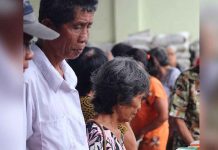
EMPLOYERS must have effective mechanisms and guidelines to promptly address sexual harassment and violence incidents committed against female seafarers and cadettes.
The Women in Maritime Philippines (WiMaPhil) raised this issue during a recent online public forum organized by the office of Sen. Risa Hontiveros on the pending Magna Carta of Filipino Seafarers.
Merle San Pedro, WiMaPhil trustee, pushed for better protection for women seafarers as part of their campaign not only to promote women as seafarers but also as part of the whole maritime industry — shipping, ports, maritime administration, maritime education and training, and logistics.
Female seafarers are exposed to various forms of discrimination, exploitation, sexual harassment, and violence, which may partly be attributed to the confined space on board vessels.
The isolated nature of the ship can increase opportunities for sexual harassment and violence, and can also amplify their negative consequences.
Sexual harassment may take the form of sexist remarks, sexual advances or sex-related behavior.
It is a reflection of the power relations between individuals involved where, in most instances, the harasser is an officer occupying a higher rank than the woman seafarer.
Women seafarers are susceptible to sexual harassment. They have limited chance of avoiding their harassers due to the rigid hierarchical environment.
They tend to be vulnerable to feelings of isolation; they are away from family and friends when the harassment occurs.
Women seafarers who experience sexual harassment early in their careers may be discouraged to pursue their profession.
In most instances, victims have to face hurdles in filing complaints, with very few even reaching the courts, thereby leaving their aggressors mostly unpunished.
In recent decades, the word “seafarer” has replaced the word “seaman” in the male-dominated maritime industry. In older times, the term “seaman” was widely used to describe anyone working at sea.
This is perhaps due to the actions of the United Nations (UN) in promoting gender equality. Women have been taking part in industries that once solely belonged to men, the maritime industry included.
The International Maritime Organization (IMO) noted that women represent only less than two percent of the world’s estimated 1.2 million seafarers while 94 percent of female seafarers are working in the cruise industry.
Within the historically male-dominated industry, IMO stressed it has been making a concerted effort to help the industry move forward and support women to achieve representation in keeping with 21st Century expectations.
IMO secretary-general Kitack Lim earlier said the maritime industry needs more women because of the quality work they provide. He underscored that women are a very important human resource which would make for safer sea travel.
In the Philippines, the Maritime Industry Authority (MARINA) has recorded 73,027 women seafarers – almost 10 percent of approximately one million Filipino seafarers issued with Seafarer’s Identification and Record Book (SIRB) as of December 2018. SIRB used to be known as the Seaman’s Book.
Stakeholders have been campaigning for the passage of the Magna Carta for Filipino Seafarers given the fact that the Philippines is a major supplier of maritime labor globally.
The estimated 519,031 deployed Filipino seafarers in 2019 (per Philippine Overseas Employment Administration data) remitted $6.539 billion or around P326.95 billion.
The sea-based sector’s remittances comprise at least 22 percent of the total dollar remittances of overseas Filipino workers (OFWs).
The first version of the proposed Magna Carta for Filipino Seafarers was the by-product of the National Seafarers Conference in 2002 held at the Manila Hotel and organized by the Apostleship of the Seas (AoS) in coordination with the office of then senator Ramon Magsaysay Jr.
Years later, several versions were introduced locally and internationally. These included the Maritime Labor Convention of 2006 (MLC 2006) that sets out seafarers’ rights to decent conditions of work and embodies all up-to-date standards of existing international maritime labor conventions . MLC 2006 is also called the Seafarers’ Bill of Rights and the fourth pillar of international maritime law.
Aside from Senator Hontiveros’ Senate Bill (SB) No.357, other proposed seafarers’ magna carta filed in the Senate included Sen. Joel Vilanueva’s SB No.1745, Sen. Nancy Binay’s SB No.1369, Sen. Ramon “Bong” Revilla Jr.’s SB No.300, and Sen. Sonny Angara’s SB No.135.
***
Atty. Dennis Gorecho heads the seafarers’ division of the Sapalo Velez Bundang Bulilan law offices. For comments, e-mail info@sapalovelez.com or call 09175025808 or 09088665786./PN






